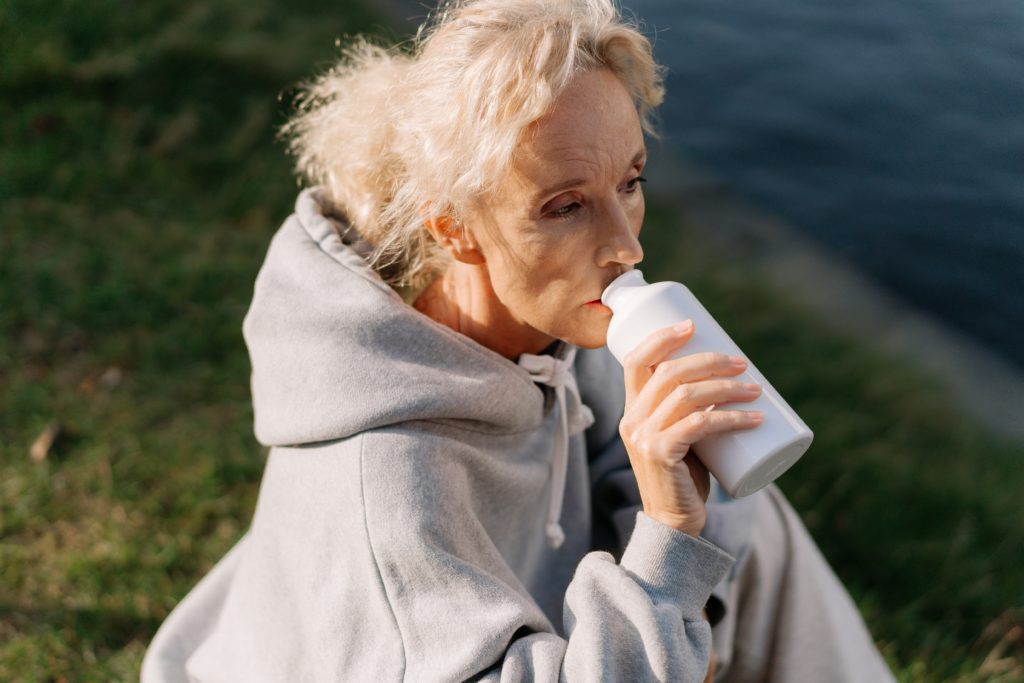
Hot flashes indicate approaching menopause as much, if not more, than the end of your monthly cycle. But menopause and uncomfortable symptoms do not need to go hand-in-hand.
Thanks to new and developing research, you can find safe, lasting relief from hot flashes before, during, and after menopause. How? Through the power of plants. More specifically, phytoestrogens.
What are hot flashes?
Research tells us about 85% of women experience hot flashes (also referred to as vasomotor symptoms) during menopause. Hot flashes tend to last no more than a few minutes but can significantly impact your daily activities, not to mention your sleep schedule. Experts distinguish hot flashes that come at night as “night sweats.”
Facial and neck redness, intensive sweating, and acute heat waves are all common symptoms of hot flashes. How long someone experiences a hot flash varies from woman to woman. Some women only experience hot flashes for a few months, while others encounter symptoms for many years, both during and after menopause.
Why do women experience hot flashes during menopause?
To understand why women experience hot flashes, we need to pay attention to the role of estrogen. Your estrogens, hormones most known for their reproductive roles, also perform essential functions in your brain. In particular, researchers surmise that estrogens influence our hypothalamus, the part of our brain that regulates body temperature.
As your menstrual cycle lengthens (and eventually stops) during perimenopause, your estrogen levels begin to decline. How your brain responds to declining estrogen (not necessarily the amount) can destabilize your body’s temperature control and contribute to hot flashes.
What are phytoestrogens?
Increasing your estrogen levels during perimenopause and menopause helps reduce hot flashes, vaginal dryness, and other symptoms of menopause. But not all women are candidates for hormone therapy or choose not to go that route.
Enter phytoestrogens.
Odds are, you’re already eating some phytoestrogens as part of your daily diet. Phytoestrogens (“plant” estrogens), such as soybeans, lentils, and certain fruits and vegetables (i.e., spinach, onions, apples, pears, and grapes), can mimic the effect of estrogen in the body, although to a lesser extent. Isoflavones and lignans are the two most well-known types of phytoestrogens and are most effective at reducing instances of hot flashes.
How do phytoestrogens reduce hot flashes?
When you eat food containing phytoestrogens, your body recognizes the compound and acts as if they were estrogen hormones. That’s part of the reason why phytoestrogens earned the moniker “endocrine disruptors” due to their influence on your hormones. And, depending on whether you have too much or too little, phytoestrogens can either work to increase or decrease your estrogen levels.
Multiple studies report phytoestrogens’ ability to decrease the severity of hot flashes with fewer side effects and risks than alternate therapies. Phytoestrogens also tend to be much more accessible to women than other forms of treatment.
Supplements that contain phytoestrogens are an efficient way to increase your daily dose and can include more milligrams than you may consume through your diet. Along with food sources, certain herbs have higher levels of phytoestrogens and are effective at reducing hot flashes.
Red Clover
Part of the legume family, red clover contains large amounts of phytoestrogens and helps to reduce vascular inflammation post-menopause and flushing brought on by hot flashes.
Sage Leaf
Sage leaf, also a staple in many herb and spice drawers, helps to reduce inflammation and includes antioxidants. Oral evidence of its health-supportive qualities dates back hundreds of years. More recent research confirms its ability to help decrease the severity of hot flashes over a few months.
Black Cohosh Root
Black cohosh, a plant native to North America, has phytoestrogenic properties that help to relieve the intensity of menopausal hot flashes and manage your body’s temperature. Studies continue to investigate its role in menopausal women’s health as it may also boost mental wellbeing.
It’s important to note that these phytoestrogens do impact the severity of hot flashes, but they are not yet proven to reduce or help with other menopausal symptoms.
How to Use Phytoestrogens for Hot Flash Relief
A woman’s ability to feel better during menopause should be safe, easy, and accessible. Mia Vita Hot Flash Relief, a new oral supplement, uses the power of phytoestrogens to reduce (or even eliminate) your hot flashes. Check with your doctor before consuming if you are pregnant, nursing, or have a medical condition. And remember, you do not need to persevere through life-disrupting symptoms. Relief is possible.